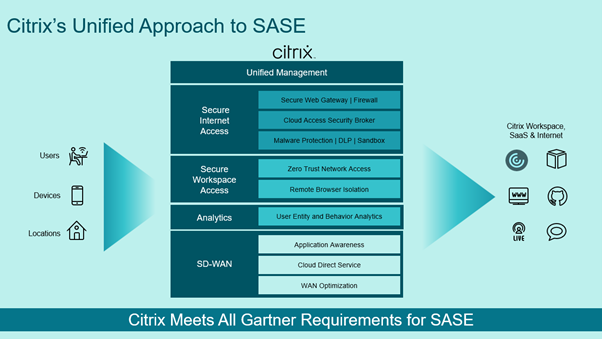Article Citrix – Security blog

By Insight UK / 18 Oct 2021 / Topics: Cloud Cybersecurity

By Insight UK / 18 Oct 2021 / Topics: Cloud Cybersecurity
With everyone moving back to the office more and more and having the option to work from home, we have faced new challenges in the IT department. Because we no longer have control over the internet connection at home and its security in combination with BYOD, this becomes a blind spot.
Almost everyone will have heard or even read about the abbreviation ZTNA (Zero Trust Network Access). ZTNA is part of a security framework devised by Gartner called Secure Access Services Edge, SASE for short. It is a combination of network security features and WAN (eg SD-WAN) capabilities. This framework makes it possible to dynamically set up and support security.
In order to gain new insights, we have to think differently. So we also need to get rid of traditional infrastructures and the associated challenges. No more traditional VPN with all the associated risks if an employee's laptop is hacked or infected so that they can access the internal network via the VPN.
Can we avoid all this? Yes, and we can also achieve a better user experience because of this. Citrix has embraced the entire framework.

With SIA, the user gets an agent on the device with which settings can be configured. For example, what to do with a website on which we do not want the user to access it from the device, but to arrive safely on the page via a remote browser.
Via the Citrix Workspace it is possible to let users log in and to secure an application, whatever form, with any desired option. For example, an extra MFA request because it concerns a company-critical application. So it is much more about the context of someone than just a username, password and possibly MFA.
By using Citrix Analytics, it is possible to monitor both security and performance-related incidents in real time and, if necessary, to immediately deploy actions to avoid far-reaching risks.
Software-Defined WAN solutions provide low latency and resilient connectivity from distributed enterprise locations to cloud and on-premise applications, while overcoming the complexity of using traditional router-based networking solutions to manage modern networks.